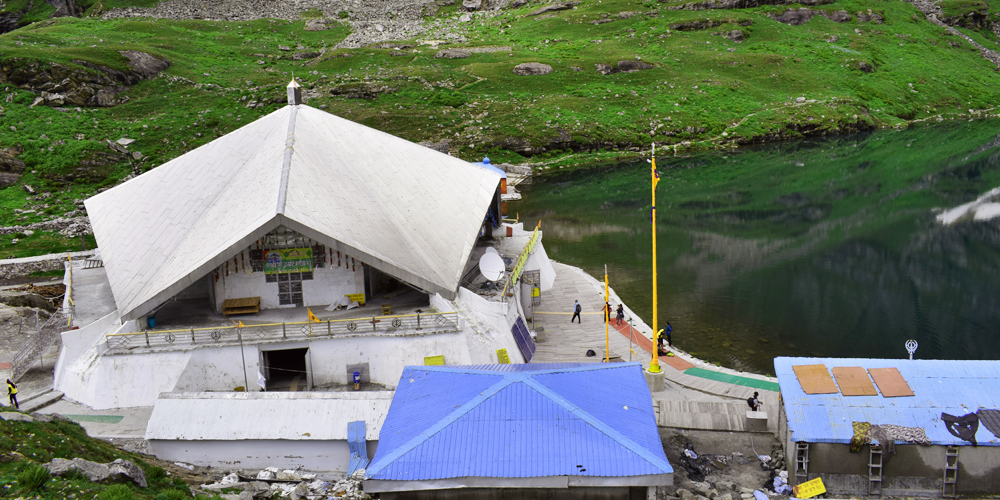

Hemkund Sahib, also known as Gurudwara Shri Hemkunt Sahib, is a significant pilgrimage site for Sikhs located in the Chamoli district of Uttarakhand, India. Situated at an altitude of 4,633 meters (15,200 ft) above sea level, this sacred gurudwara is surrounded by seven snow-capped peaks, collectively known as Hemkund Parvat.
The history of pilgrimage to Hemkund Sahib dates back to references found in the holy Granth of Sikhs, the Guru Granth Sahib, where it is believed that the tenth Sikh Guru, Guru Gobind Singh, meditated in his previous life. Despite its ancient references, the present structure of Hemkund Sahib Gurudwara was established in the 1960s after Major General Harkirat Singh, an Indian Army officer and prominent Sikh figure, and Sikh scholar Surinder Singh Kohli identified the site.
Before the gurudwara was constructed, the area remained largely unexplored due to its harsh terrain and inhospitable weather conditions. Once confirmed as the meditative grounds of Guru Gobind Singh, efforts were made to build a path and structure that could accommodate pilgrims who wished to visit this holy site.
Since its establishment, Hemkund Sahib has seen a steady increase in the number of visitors each year. Sikh devotees from around the world embark on this challenging trek, showcasing their devotion and paying homage to Guru Gobind Singh. The yatra (journey) to Hemkund Sahib typically starts from Govindghat, passing through Ghangaria and culminating at the gurudwara. Despite the difficult trek, the number of pilgrims has grown, contributing significantly to the local economy and promoting infrastructure development in the region.
Modern advancements have made the pilgrimage to Hemkund Sahib more accessible. Helicopter services are now available to cover a portion of the journey, although the environmental impact of such services is a concern among conservationists. The trekking paths have been improved, and basic amenities like food and lodging have been developed in Ghangaria, the base camp for the trek to Hemkund Sahib.
Eco-Tourism is one of the latest trends in the Hemkund region. Efforts are being made to balance pilgrimage with environmental sustainability. Controlled Tourism is also a trend, with limits placed on the number of visitors to protect the fragile ecosystem. Moreover, there has been a push to encourage off-season tourism to reduce pressure during the peak pilgrimage period.
Hemkund Sahib continues to be not just a spiritual journey but also a testament to human faith and perseverance. Despite its remote location and challenging access, the gurudwara's breathtaking natural beauty and profound religious significance beckon the devoted and the adventurous alike. As a responsible tourist destination, Hemkund Sahib is a shining example of spiritual tourism intertwined with respect for nature's grandeur.
Note: Hemkund Sahib is only accessible from May to October due to its extreme weather conditions, with the region remaining snowbound for the rest of the year.